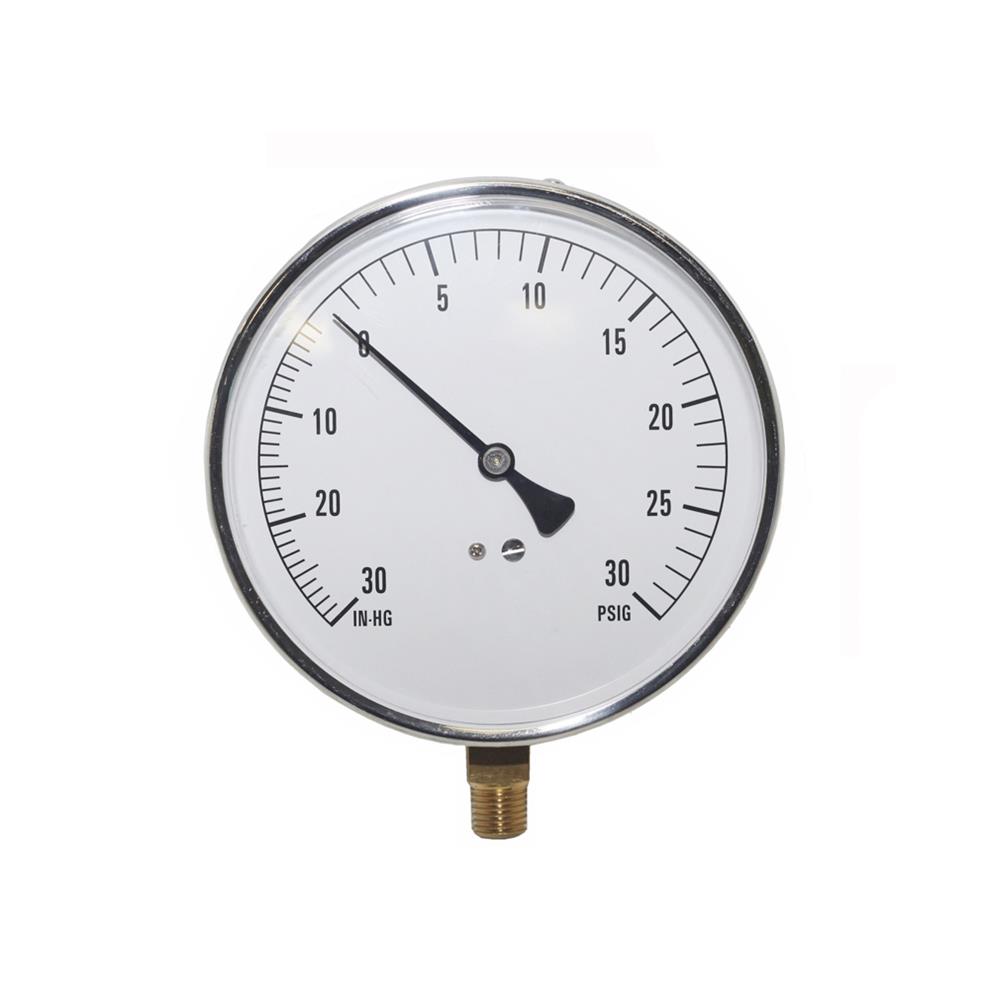A vacuum gauge is used to measure pressure at levels lower than that of the surrounding atmosphere. Typically, the value of the atmospheric pressure is set to zero, and the value of the vacuum pressure is presented in negative values. This implies that a value of -1 barg indicates a complete vacuum.
What Exactly Does Vacuum Pressure Mean?
At sea level, the atmospheric pressure is equal to 101.325 kilopascals (kPa), which is the standard pressure. It is more customary to express pressure in terms of bars or pounds per square inch (psi). When compared to the pressure of the surrounding atmosphere, the value of the vacuum pressure, also known as Pvac, is negative.
It should not be confused with absolute pressure, often known as Pab, which is a unit of measurement of vacuum pressure that is based on the absolute zero point. The diagram that follows illustrates, in a clear and concise manner, the connection between the various pressure definitions. Check out this link to find out more details https://www.newsorigins.com/vacuum-pressure-impregnated-transformer-market-50433/.
How Exactly Does A Vacuum Pressure Gauge Measure Vacuum Pressure?
The majority of pressure gauges make use of a tube that has been bent in some way. The name for this kind of tube is a Bourdon tube. When there is a pressure difference between the medium as well as the atmosphere, the tube will bow outwards ever-so-slightly. Through the use of a mechanism, the deflection of the tube is translated into a position for the needle on the dial.
Click here – The 2018 Farm Bill & Hemp, Explained
In point of fact, the design basis behind standard pressure gauges as well as vacuum pressure gauges is identical. You can read our comprehensive article on pressure gauges if you are interested in learning more about the design concepts that went into their creation.
The majority of gauges are offered with either a rear connection or a bottom connection. Plastic or stainless steel housings can be purchased for the gauges depending on your preference. Plastic is more impact resistant than metal, although it is more expensive. Plastic does not corrode. Either analog gauges, such as a bourdon tube pressure gauge, or digital pressure gauges may be utilized. Click on this page to discover more helpful information about the topic.
In What Kinds Of Situations Are Vacuum Gauges Typically Used?
Virtually every industry, including but not limited to the automobile industry, the manufacturing, food and beverage business, chemical industry, the pharmaceutical industry, the and the nautical industry, makes use of vacuum. Vacuum gauges are essential components of the system because of their role in ensuring both the system’s optimal functioning and its safety.
Click here – What Criteria Must Be Met In New Jersey In Order To Get A Restraining Order?
Applications like as pick-and-place, cleaning the workplace of toxins and other materials, and material transportation are all possible uses for them.
Precision Of Vacuum Pressure Gauges
The difference between the actual value and the value that is shown on the dial is what constitutes the accuracy of the instrument. This is often communicated as a percentage of the total time period.
The EN 837 standard specifies the accuracy criteria for pressure gauges, and those standards are stated as classes of accuracy. If a gauge has a reliability class of 2.5, it signifies that it can be off by up to 2.5% of the span when compared to the actual value. A vacuum gauge typically has a span of 1 bar (15 psi); hence, 1 bar multiplied by 2.5% results in a variation of 0.025 bar. A positive or negative value might be assigned to the deviation.
Take into consideration that changes in temperature or intense vibrations may have an impact on the performance of the gauge. Interpreting the dial can result in slight inaccuracies because even the observer does have an effect on the precision of the measurement.
Pressure Gauges For Absolute Pressure
It is essential to keep in mind that absolute pressure gauges as well as vacuum pressure gauges are distinct from one another. Absolute pressure gauges detect with reference to the absolute zero point, in contrast to normal vacuum pressure gauges, which measure with reference to the pressure of the surrounding atmosphere.
These gauges incorporate a reference chamber that is nearly evacuated of all air in order to fulfill this function. These high-end devices, for instance, are utilized in the monitoring of vacuum pumps and vacuum packing machines.
What Is The Key Distinction Between Vacuum Pressure And Gauge Pressure?
Both gauge pressure as well as vacuum pressure are measured in relation to the pressure that is present in the atmosphere. The distinction between gauge pressure and atmospheric pressure is that vacuum pressure is lower than atmospheric pressure. On the other hand, gauge pressure is higher than atmospheric pressure.
It is important to do enough research in order to understand the topic better. The more you learn, the faster you’ll be able to acquaint yourself with the function of vacuum pressure gauges.






